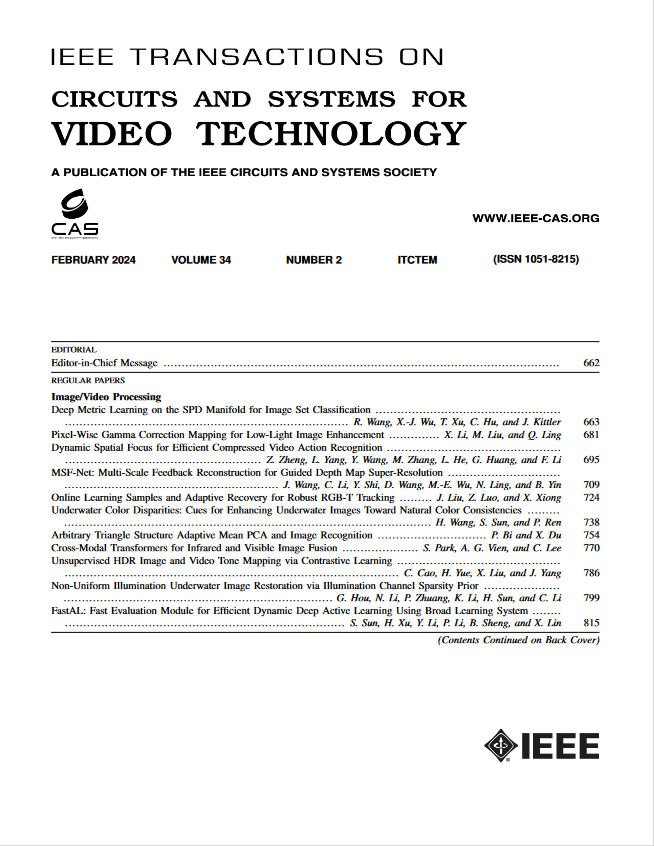Effective Global Context Integration for Lightweight 3D Medical Image Segmentation
IF 8.3
1区 工程技术
Q1 ENGINEERING, ELECTRICAL & ELECTRONIC
IEEE Transactions on Circuits and Systems for Video Technology
Pub Date : 2024-12-05
DOI:10.1109/TCSVT.2024.3511926
引用次数: 0
Abstract
Accurate and fast segmentation of 3D medical images is crucial in clinical analysis. CNNs struggle to capture long-range dependencies because of their inductive biases, whereas the Transformer can capture global features but faces a considerable computational burden. Thus, efficiently integrating global and detailed insights is key for precise segmentation. In this paper, we propose an effective and lightweight architecture named GCI-Net to address this issue. The key characteristic of GCI-Net is the global-guided feature enhancement strategy (GFES), which integrates the global context and facilitates the learning of local information; 3D convolutional attention, which captures long-range dependencies; and a progressive downsampling module, which perceives detailed information better. The GFES can capture the local range of information through global-guided feature fusion and global-local contrastive loss. All these designs collectively contribute to lower computational complexity and reliable performance improvements. The proposed model is trained and tested on four public datasets, namely MSD Brain Tumor, ACDC, BraTS2021, and MSD Lung. The experimental results show that, compared with several recent SOTA methods, our GCI-Net achieves superior computational efficiency with comparable or even better segmentation performance. The code is available at轻量级三维医学图像分割的有效全局上下文集成
准确、快速的三维医学图像分割在临床分析中至关重要。由于归纳偏差,cnn很难捕获远程依赖关系,而Transformer可以捕获全局特征,但面临相当大的计算负担。因此,有效地整合全局和详细的见解是精确分割的关键。在本文中,我们提出了一个有效的轻量级架构GCI-Net来解决这个问题。GCI-Net的关键特点是采用全局引导特征增强策略(global-guided feature enhancement strategy, GFES),该策略融合了全局背景,便于对局部信息的学习;3D卷积注意力,捕捉远程依赖关系;还有一个渐进式下采样模块,可以更好地感知细节信息。GFES通过全局引导特征融合和全局-局部对比损失来捕获局部范围的信息。所有这些设计共同有助于降低计算复杂性和可靠的性能改进。该模型在四个公共数据集上进行了训练和测试,分别是MSD脑肿瘤、ACDC、BraTS2021和MSD肺。实验结果表明,与最近几种SOTA方法相比,GCI-Net的计算效率更高,分割性能相当甚至更好。代码可在https://github.com/qintianjian-lab/GCI-Net上获得。
本文章由计算机程序翻译,如有差异,请以英文原文为准。
求助全文
约1分钟内获得全文
求助全文
来源期刊
CiteScore
13.80
自引率
27.40%
发文量
660
审稿时长
5 months
期刊介绍:
The IEEE Transactions on Circuits and Systems for Video Technology (TCSVT) is dedicated to covering all aspects of video technologies from a circuits and systems perspective. We encourage submissions of general, theoretical, and application-oriented papers related to image and video acquisition, representation, presentation, and display. Additionally, we welcome contributions in areas such as processing, filtering, and transforms; analysis and synthesis; learning and understanding; compression, transmission, communication, and networking; as well as storage, retrieval, indexing, and search. Furthermore, papers focusing on hardware and software design and implementation are highly valued. Join us in advancing the field of video technology through innovative research and insights.

 求助内容:
求助内容: 应助结果提醒方式:
应助结果提醒方式:


